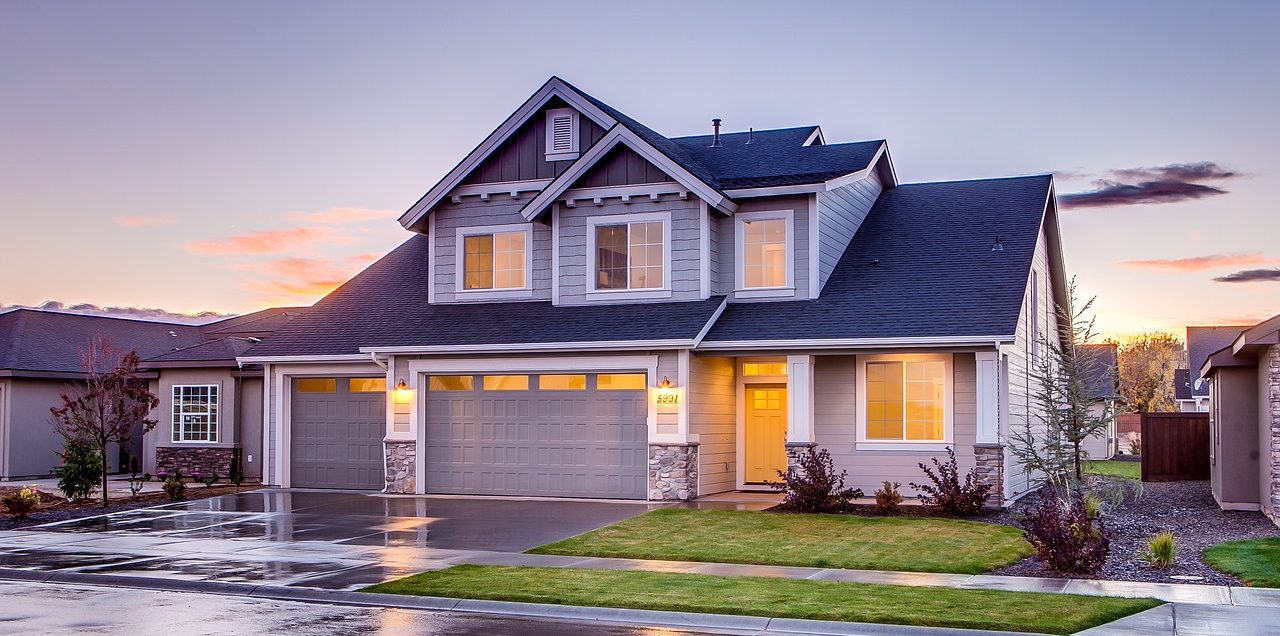
5 Easy Tips to Choosing an Exterior Paint Palette
Posted on May 29, 2019
Be the house on the block that everyone talks about – in a good way. Choosing a great color scheme can enhance the appeal of your home and bring up the whole block’s property values. But how do you get the right color choices? Here are 5 tips for choosing colors for your home’s exterior.
Unlike your interior color choices, the exterior of your home can affect the entire street and put pressure on homeowners to choose a palette that appeals to you and your block. There are a few items to take into account when making your choices. Think about the surrounding items and their colors, like landscaping, hardscaping, roofing and more.
With our tips, or the use of one of our color consultants, you’ll be able to choose colors that appeal to you, enhance your home’s appeal and create a lovely curb appeal.
1. Plan Around Items You Can’t Change
Changing the color of a roof or driveway is difficult (and costly!). Plan your home color so that it works with the items around your home that are hard or costly to change. If your home is surrounded with a rust color roof and black asphalt, make sure the color you choose on your home’s facade works with those colors in a scheme. Use the tones within the colors to help create your color palette. Are they warmer like beige, brown or red? Or do they lean more cool like blue, gray or black? Think of these colors as part of your scheme before you begin your color choice.
2. Home’s Style and Era
Particular styles, ages and even locales of homes lend themselves to particular colors. The colors of the Caribbean would look out of place in the rural Carolinas. The same goes for a gothic northern home color scheme in the desert.
There are paint manufacturers that create historically accurate colors to be used on homes of particular eras. The colors create a great guideline to springboard your color choices forward. Think of it as a suggestion based on what your home might have originally looked like.
3. Visual Effects
Before landing on a color, consider how your home sits in the landscape. Is it buried among trees? Try lighter or brighter colors to make it stand out. Is it in a stark landscape of palm trees or sand? Go less overt. Your home already stands out, so there’s no need to overdo it. Brighter colors will make your home stand out, while darker will cause it to recede.
4. Choose Several Paint Shades
When picking colors for your home, remember, beyond surrounding colors, typically a home color palette requires three colors. There is the main color that you will paint the walls of your home. An accent color to be used on smaller areas like shutters and doors. Finally, trim color, for window frames, railings or other small areas.
The trim, ideally, should contrast with the main color. If the main color is a dark choice, use a classic white or pale color for the trim. Then consider a statement color for your shutters or door. Remember not to overdo it with the bright. Placing it too many areas counteracts the style you were hoping to achieve.
5. Paint Chips are Never Enough
Choosing a color for a large home is nearly impossible from a 1 inch x 1 inch paint chip. It’s a great starting point. Once you’ve narrowed down your choices, it’s always recommended that you pick up a sample of two or three colors and paint a larger swatch on the exterior of you home to verify the look of the color larger.
Pick an area of your home that is inconspicuous. Check your work at various times of day and lighting to make sure you like the color in all lights and times.
If you are still uneasy about choosing the color alone, speak with one of our color consultants to help you with the choice.






